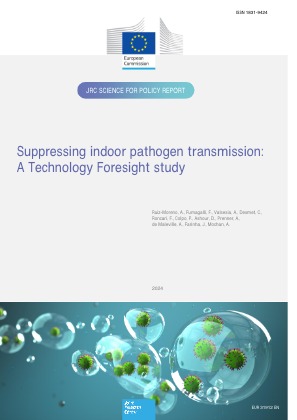Last Edited: a year ago
Suppressing indoor pathogen transmission
A Technology Foresight study
Airborne transmission is considered one of the most common ways of transmitting respiratory viruses. The reach of airborne pathogens and persistence of aerosolized particles suspended in the air are a significant concern for the spread of pandemic and seasonal respiratory diseases. This is particularly relevant in indoor spaces where most respiratory infections occur.
Controlling the transmission of airborne pathogens is therefore a cornerstone of public health efforts to manage and prevent the spread of infectious diseases, ensuring safety and health for individuals and communities. Technologies that allow such control are essential to address the challenge. This report is the output of a comprehensive study which evaluates the potential of the current technology landscape for suppressing indoor airborne pathogen transmission.
The analysis outlines two main technology groups: those for detecting airborne pathogens and those for decontaminating air and surfaces. It identifies several key technologies in each group, and assesses their maturity, impact, and potential priority for funding. It outlines the drivers, enablers, and barriers for the development and adoption of these technologies, providing insights into factors that may influence their future implementation. It also explores forward-looking perspectives with scenarios for future health crises and offers recommendations for policy and research to address the challenges and leverage the opportunities in the field of indoor air quality.
The study was conducted during 2024 by European Commission Joint Research Centre (JRC) and Health Emergency Preparedness and Response Authority (HERA).
Posted on: 22/10/2024
